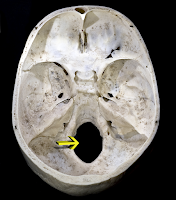Evolution of bipedalism: Orrorin and the intertrochanteric line
Richmond and Jungers did a good job explaining the evolution of hominins and the femoral morphology of Orrorin tugenensis which is helpful to understand what it takes for a species to be bipedal. It explains how the foramen magnum suggest that they were bipedal. The femur can be a great tell tel sign as well.
Orrorin femur morphology has been highly debated. Scientists believe it was one of the first early humans who had evolved bipedalism, but far from those of apes and of the Homo genus. The position of the foramen magnum also tells a great deal of how O. tugenensis stood up. The fact that some of the femora pieces look very similar to non-bipedal primates.
Comparing its femur bones with others from early hominins, great
apes, and early and modern humans help us understand if O. tugenensis
was indeed bipedal.
A. P. troglodytes
B. O. tugenensis
C. P. robustus
D. P. robustus
E. A. afarensis
F. P. boisei
G. Early Homo
H. modern H. sapiens
“O. tugenensis shares this uniquely archaic hominin morphological pattern, thus providing strong evidence that O. tugenensis was adapted to bipedalism 6 million years ago – Richmond & Jungers 2008"
This included a marked obturator externus groove, an intertrochanteric line, a vertical gluteal tuberosity, and a slightly enlarged head. Still, it lacks a linea aspera that is distinctive in modern and fossil genus Homo.
Looking at the comparative femoral results, we can see that Orrorin has both the features of bipedality and those related to arboreal climbing. Its bipedality was similar to chimpanzees. The proximal phalanx can test the hypothesis that bipedalism was evolved from an ancestor who climbed vertically, and knuckles walked. Orrorin was a keystone species for how we evolved to walk upright. How it was changed over millions of years, have been similar to the human femur.
Intertrochanteric line
It is indicated to cause bipedality since it is found in modern humans, A. afarensis, and of course, Orrorin.
It is also found in Orangutans, so does this femur piece be a necessity for bipedality?
Orrorin shares with modern humans but not australopiths a medially projecting lesser trochanter. The lesser trochanter can be seen projecting medially towards the body centerline. The intertrochanteric line and its parts are thought to regular full extensions of the thigh during bipedal locomotion.
Others argue that it is not a diagnostic trait of habitual bipedalism. It can be found in primates found in Africa and Asia. It does not specifically imply bipedality, but a habitual extension of the femur.
Metrical analyses of BAR 1002'00 by Richmond and Jungers confirms its hominin status. These studies found that the femur is similar to that of A. afarensis, indicating that Orrorin was well adapted to habitual but not obligate bipedalism. Like I had said before, they also retained adaption consistent with arboreality.
Harcourt-Smith, W.E.H., 2013. The
Origins of Bipedal Locomotion. In: Handbook of Paleoanthropology. Springer
Berlin Heidelberg, pp. 1–36.
Klenerman, L., Wood, B., 2006. The
Human Foot. Springer, London.
Muehlenbein, M.P., 2015. Basics in
Human Evolution, 1st ed. Academic Press.
Senut, B., 2016. Morphology and
environment in some fossil Hominoids and Pedetids (Mammalia). Journal of
Anatomy. 228, 700–715.







The intertrochanteric line is so interesting in that even for something as mundade as this there is debate about its significance. I think we are going to reach a point where we may need to rethink our emphasis on bipedalism as the that made us human. We know a lot about it, but maybe there was a lot more homoplasy than we think!
ReplyDelete